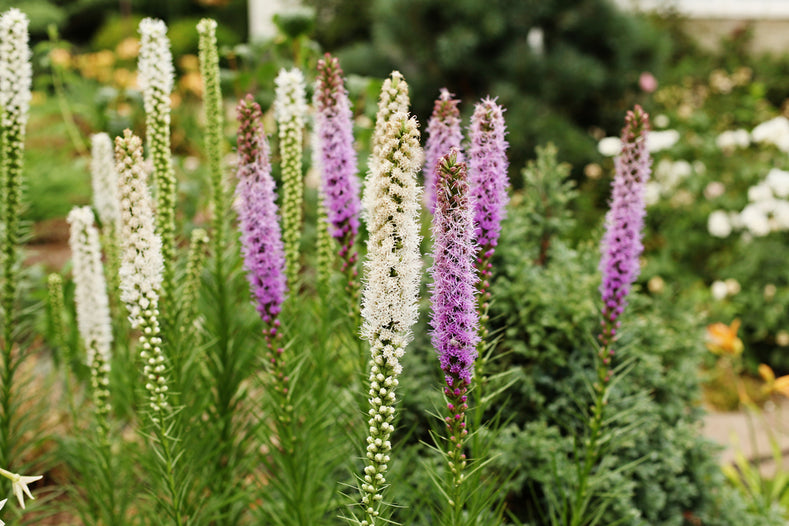Liatris plants are captivating herbaceous perennials that feature striking vertical columns of intriguing blooms, reminiscent of feather dusters. These small flower spikes gracefully descend and arrange themselves in beautiful clusters, gradually unfurling from the top down, providing a vibrant display of colour from summer through autumn. The erect stems are adorned with slender, grass-like leaves, creating an enchanting profusion of foliage. Liatris is particularly well-suited for flower beds and borders in coastal, cottage, or informal garden settings. Typically, these plants reach a height and spread of approximately 50-90cm, adding a delightful presence to your garden.
How to plant Liatris:
For optimal growth, it is recommended to plant Liatris in well-drained soil that consists of a mixture of sand, chalk, and loam. The soil can have an acidic, alkaline, or neutral pH balance. Early spring is the ideal time for planting, and it is advisable to space the plants approximately 30-38 cm apart, ensuring they are planted at a depth of 15 cm to allow ample room for growth. When planting, water the plants thoroughly and deeply, and apply a layer of mulch to retain moisture while they are still young. Liatris thrives best when positioned in full sun, enabling them to reach their optimal potential.
How to care for Liatris:
To ensure the health of these young plants, it is important to keep the soil moist but avoid water-logging, as it can be detrimental to their growth. Once the Liatris plants are established, they require minimal watering, and it is advisable to allow the top layer of soil to slightly dry out between waterings. Generally, Liatris does not require additional fertilisation, especially if grown in nutrient-rich, healthy soil. However, if needed, you can consider adding fertiliser before new growth emerges in the spring.


